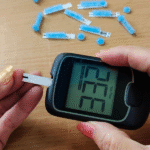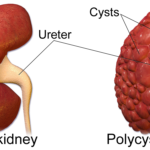Coronary artery disease (CAD) is a condition that affects the arteries supplying the heart with blood, causing a buildup of plaque in the artery walls. This buildup can lead to a narrowing of the arteries, reducing blood flow to the heart and increasing the risk of heart attack, heart failure, and other serious health problems. CAD is one of the most common types of heart disease, affecting millions of people worldwide, and is often referred to as a “silent killer” because it can develop over many years without causing any noticeable symptoms. In this blog, we will discuss what coronary artery disease is, what causes it, and how it can be diagnosed and treated.

What is Coronary Artery Disease?
The heart is a muscular organ that requires a constant supply of oxygen and nutrients to function properly. The coronary arteries are the blood vessels that supply the heart muscle with oxygen and nutrients. Coronary artery disease occurs when these arteries become narrowed or blocked by a buildup of plaque, a substance made up of cholesterol, fat, and other substances that can accumulate in the artery walls over time. This buildup is called atherosclerosis and can cause the arteries to become stiff and inflexible, reducing blood flow to the heart and increasing the risk of heart attack and other serious health problems.
What Causes Coronary Artery Disease?
There are many factors that can contribute to the development of coronary artery disease, including:
High blood pressure:
High blood pressure can damage the arteries and increase the risk of plaque buildup.
Increase cholesterol:
High levels of LDL cholesterol (“bad” cholesterol) can contribute to the formation of plaque in the arteries.
Smoking:
Smoking can damage the lining of the arteries and increase the risk of plaque buildup.
Diabetes:
People with diabetes are at increased risk of developing coronary artery disease because of high blood sugar levels that can damage the arteries.
Family history:
People with a family history of heart disease are more likely to develop coronary artery disease.
Age:
As we age, our arteries become less flexible and more prone to damage, increasing the risk of plaque buildup.
Diagnosis and Treatment
Coronary artery disease can be diagnosed through a variety of tests, including:
Electrocardiogram (ECG):
Test measures the electrical activity of the heart and can detect abnormal heart rhythms and other signs of heart disease.
Echocardiogram:
This test uses sound waves to create images of the heart and can detect abnormalities in the heart’s structure and function.
Coronary angiogram:
Test involves injecting a dye into the coronary arteries and taking X-rays to see if there are any blockages or narrowing of the arteries.
Treatment for coronary artery disease may include:
Lifestyle changes:
Making healthy lifestyle changes, such as quitting smoking, eating a healthy diet, and exercising regularly, can help reduce the risk of plaque buildup in the arteries.
Medications:
Medications such as statins, blood pressure medications, and aspirin can help reduce the risk of heart attack and other complications of coronary artery disease.
Procedures:
In some cases, procedures such as angioplasty or bypass surgery may be necessary to open blocked or narrowed arteries and restore blood flow to the heart.
Prevention
Preventing coronary artery disease involves making healthy lifestyle choices, including:
Eating a healthy diet:
A diet that is low in saturated and trans fats and high in fruits, vegetables, and whole grains can help reduce the risk of coronary artery disease.
Exercising regularly:
Regular physical activity can help reduce the risk of coronary artery disease by improving cardiovascular health.
Maintaining a healthy weight:
Being overweight or obese can increase the risk of coronary artery disease.
Quitting smoking:
Smoking is a major risk factor for CAD and quitting smoking can significantly reduce the risk of developing the condition.
Managing other health conditions:
Managing other health conditions, such as high blood pressure and diabetes, can help reduce the risk of CAD.
Regular check-ups:
Regular check-ups with a healthcare provider can help identify and manage risk factors for coronary artery disease.
Conclusion
Coronary artery disease is a serious health condition that can have life-threatening consequences if left untreated. It is important to understand the risk factors for CAD and take steps to prevent and manage the condition.
Making healthy lifestyle choices, such as eating a healthy diet, exercising regularly, quitting smoking. Managing other health conditions, can help reduce the risk of developing CAD.
If you have any concerns about your heart health. It is important to speak with a healthcare provider for guidance on prevention, diagnosis, and treatment. Remember, taking care of your heart is essential to living a long and healthy life.











